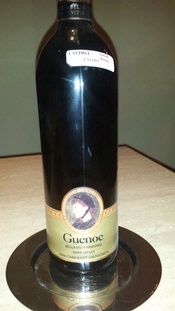It’s no wonder many wine enthusiasts approach the task of opening an older bottle with trepidation. The fear and loathing is understandable for anyone who’s had a faulty cork shred in an attempt to extract it from an expensive or rare vintage.
 More often than not, if the wine has been stored properly – on its side in a cool, dark space – the cork will come out easily and in one piece. But there are times, and it’s simply the luck of the draw, when removing an old cork can result in unmitigated disaster, crumbling before your eyes and literally impossible to extract with an ordinary corkscrew.
More often than not, if the wine has been stored properly – on its side in a cool, dark space – the cork will come out easily and in one piece. But there are times, and it’s simply the luck of the draw, when removing an old cork can result in unmitigated disaster, crumbling before your eyes and literally impossible to extract with an ordinary corkscrew.
And so it was on a recent evening when I foraged through the cellar for a well-aged Cabernet to serve with a beautiful prime ribeye steak. After considering a number of possibilities, my hand settled upon a bottle of 1994 Guenoc Bella Vista Vineyard Cabernet Sauvignon from the Napa Valley.
The wine had been resting on its side in my cellar for at least 17 of its 20 years. The ullage (the space between the bottom of the cork and the liquid in the bottle) was exceptional for a 20-year-old wine. And there was no evidence of seepage around the capsule.
From all appearances the wine was in superb condition. But when the dramatic moment arrived to open the bottle, the cork disintegrated, leaving the neck of the bottle and the liquid at the very top covered with what looked like sawdust.
The cork had completely dried out over time despite lying on its side with the bottom of the cork wet for those many years. The problem was nothing more than a bad or faulty cork, and I can say from years of experience that it happens.
Not to worry, however, if you have the proper tools. To recover from a crumbled cork you will need a decanter and a funnel equipped with a wire mesh trap to catch the cork particles as you decant.
But first I used the knife on the corkscrew to push the cork completely into the bottle to create space for the wine to escape. The wire mesh captured all of the broken cork and left the decanted wine in pristine condition.
To my utter delight, the faulty cork had not spoiled the wine. It was loaded with primary fruit, with great color and remarkable freshness for a 20-year-old California Cab.
8
